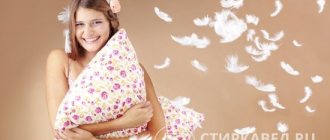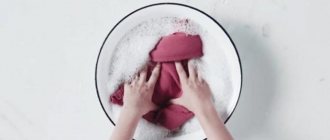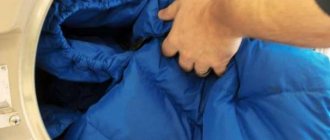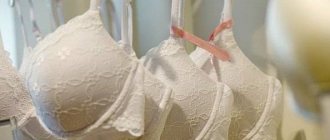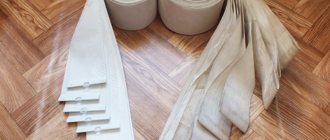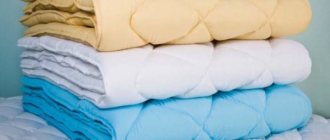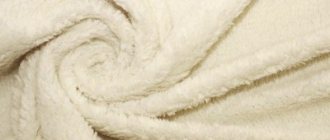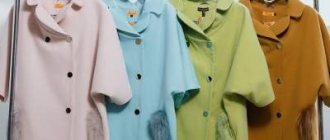Sound sleep is the key to good health. One of the factors for a comfortable sleep is a comfortable, soft and clean pillow. The classic version of pillow filling is feathers.
This natural material is quite demanding in terms of how to care for it, but it will adequately reward all efforts made with a long service life, thermal insulation properties, and ergonomic shape.
Read the article about how to wash feather pillows at home without ruining them.
Is it possible to do this?
The recommended frequency of washing pillows is twice a year. Frequent water procedures adversely affect the condition of the filler, worsening its quality.
Before you start the washing process, it is important to decide which feather is inside the pillow.
There are two types of natural filler:
- chicken;
- waterfowl (goose, duck, swan, eider).
The label sewn to the product will help determine the composition and also provide complete information on the method of care.
If the filler is chicken feather, you can forget about washing . This option is subjected to dry cleaning only in specialized centers.
Chicken feathers differ from waterfowl feathers in their structure:
- it absorbs moisture well,
- takes a long time to dry
- after drying it tends to crumble into small components.
The feather of a duck, goose, eider, or swan feels comfortable in water, so washing is not a serious test of strength for it, you just need to follow certain rules.
In order to return the feather pillow to its original appearance, use wet cleaning:
- washing machine;
- hand washing;
- ferry.
An important point is to study and follow the recommendations of the manufacturer of this bedding.
Preparation for the procedure
The preparatory stage includes several sequential actions:
- cleaning the pillow from dust;
- preparing laundry bags;
- distribution of feathers from pillows to bags.
Dust accumulated during the operation of the product must be removed using a regular carpet flapper.
A vacuum cleaner is not an assistant in this matter - maximum power can harm the filler, and reducing the force of impact will not give the desired results.
The next step is to sew special bags in which the filling will be placed during washing. It is not advisable to wash the entire pillow. A dense layer of filler in the product will not allow for high-quality cleaning, but it can form into lumps that dry poorly and cake.
It is optimal to sew 4 bags of thick cotton fabric measuring about 25-30 cm in length and the same in width.
According to reviews from experienced users, the best material option is teak.
It will keep fluff and small feathers from trying to escape the cover during washing. But gauze, even in several layers, should not be used.
An alternative to several bags is one large one, which is twice the length of the bedspread. For standard pillow sizes, the length of the cover will be one hundred and forty centimeters.
The most important point is the distribution of the filler into the bags . To do this you need:
- Close all doors and windows to prevent drafts.
- Spread a sheet on a flat surface and place a pillow on it.
- Carefully rip the napkin along the seam.
- Transfer the feathers into bags and sew them up carefully.
Before placing the filler in the laundry bags, you should spray them with water from a spray bottle. Thanks to this, the fluff will not fly around.
If the bedside table is in satisfactory condition, it is shaken off from fluff, washed and reused. If desired, you can sew a new cover.
Old pillowcases are used as laundry bags . Before use, you should make sure that the fabric is intact and thick enough.
Drying the pillow correctly
The washed filling is laid out on a horizontal surface covered with cotton cloth. The fluff should lie in a thin, even layer. Detected tangles are sorted out by hand, and those that stick together even after washing are thrown away. The volume of the pillow may decrease, but it will become cleaner and without bumps.
Wet fluff is covered with gauze, otherwise it will fly apart. Drying takes place under natural conditions within 1-2 days.
IMPORTANT : our experts do not recommend washing pillows made from chicken feathers or down. Unlike duck and goose filler, the filler does not tolerate wet treatment, and subsequently quickly rots. Unpleasant odor, loss of volume, bacteria are the result of improper care. Take these items to the dry cleaner.
On open air
Ideal drying option. Try to protect the washed filling from rain, dew, and also protect it from the wind with firmly secured gauze.
Battery
This drying method cannot be used. High temperatures increase the fragility of down. The pillow will last much less.
Using special devices
Do not use a hair dryer or a fan with warm air. Let the fluff dry naturally. Stir it from time to time. This should be done directly under the gauze so that it does not fly apart. Yes, it is difficult, long, troublesome. But, what can you do, there is no other option - except dry cleaning, of course.
Video: how to wash and dry a feather pillow
Watch the video to know how to properly wash a pillow at home.
Washing in an automatic washing machine
Wash feather pillows in a machine using the following modes:
- "delicate",
- "duvet blanked",
- "wool".
In this case, the water temperature should not exceed 30 degrees Celsius.
And to better get rid of excess detergent, it is recommended to include an additional rinse .
There is no need to pre-soak the product. Pillows are washed with a gel detergent for delicate fabrics. The best results are obtained by special gels for washing down products, which are also used to care for down jackets. These products do not contain phosphates or bleaches.
When choosing products for washing pillows, you should take into account that natural fillers perfectly absorb and retain odors. Therefore, a sharp, rich aroma can cause poor sleep and headaches.
Washing powders should not be used , they are difficult to wash out and negatively affect the structure of the filler, forming clumps.
Down washing products contain lanolin, which has a beneficial effect on the structure of the feather, maintaining its elasticity, protecting it from dirt and extending its service life.
When machine washing, up to 4 special balls must be thrown inside the drum . This technique will prevent fluff from clumping and improve the quality of cleaning. Balls can be replaced with tennis balls.
Push-ups should be carried out at speeds not exceeding four hundred. If the washing machine does not have such a level, then it is better to disable this function. You can squeeze out the feather bags by hand by wrapping them in a clean sheet or towel and applying even pressure with your hands.
How to wash by hand?
Many people associate the phrase “hand washing” with hard work. However, in reality it’s not all that scary.
When washing a feather pillow yourself by hand, the algorithm is as follows:
Pour water at a temperature of thirty degrees into the bath; the water level should be sufficient so that the feather can stay on the surface.- Dissolve the detergent, you can add laundry soap, do not use bleach.
- Pour feathers and fluff into the container; it is not necessary to use laundry bags.
- Leave for a couple of hours.
- After soaking, the filler is cleaned by gently squeezing it with your palms.
- Collect feathers in a colander and rinse under the tap or rinse in a bowl of clean water.
- Squeeze with your hands and transfer to a dry cloth.
When rinsing, you can add three drops of essential oil or a tablespoon of vinegar to the water. This will get rid of the musty smell.
There is a faster way to hand wash:
- Dissolve detergent in water at a temperature of up to thirty degrees;
- rip open the bedside table and pour its contents into three old pillowcases and sew them up;
- immerse in the solution and, pressing with your hands, walk over the entire surface of the improvised pillow;
- rinse at least three times;
- Wring out and hang the feather pillowcases to dry on a clothesline, shaking occasionally.
It should be noted that when using this method, the quality of cleaning the product decreases .
To ensure that the filling dries well, fluffs up and does not become moldy, it is preferable to wash a feather pillow in the warm season.
Traditional methods
In addition to traditional washing, traditional cleaning methods are used to care for bedding.
Soaking with lemon juice
Dissolve the juice of five large lemons, strained from the seeds, in 3 liters of warm water. Place covers with filler in the solution. After two hours, the down and feathers will become much whiter, acquire a pleasant smell, and be cleansed of dirt and germs.
Dry cleaning with baking soda and tea tree essential oil
A good cleaning and disinfecting effect is achieved by dry treating a feather or down pillow with baking soda (100 g), lightly moistened with tea oil (10-15 drops). Cleaning is carried out as follows:
- spread the powder on the bottom of the basin;
- put a pillow in it, clean the cover on all sides, rubbing it with soda;
- leave for 1 hour;
- vacuuming.
Thanks to the procedures, washing a pillow or dry cleaning is delayed for 2-3 months.
How to clean a product with steam at home?
To refresh the filling and pillowcase, and to destroy unwanted inhabitants of the pillow, the method of exposure to hot steam is successfully used.
When cleaning with steam, a steam generator or steamer is used . These devices can be replaced with an iron if it is equipped with a vertical steam function.
The cleaning procedure is quite simple:
Hang the pillow vertically on a rope, securing it.- Steam both sides thoroughly.
- Leave the product for fifteen minutes, then expose it to steam again.
- Next, remove the pillow and shake it several times.
- Leave in a horizontal position to dry, turn over and beat several times during the drying process.
It should be rightly noted that steam cleaning will not replace a full wash , but in just twenty minutes it will get rid of pathogenic microflora and mustiness.
Proper drying
An equally important step in cleaning this bedding is drying. A mistake made at this stage can devalue all the efforts made.
The basic rule is no rush; complete drying of the feather filler takes about three days.
In order not to spoil the result, you must follow the recommendations:
spread the feathers and fluff on a dry cloth or paper, stirring during the drying process;- cover the top with gauze so that the fluff does not fly away;
- it is allowed to dry down near the battery, but not on it;
- when drying the filler in bags, they should be hung in the air, out of sunlight, and periodically beat them with your hands;
- using a hairdryer is possible provided that the distance to the filler is at least twenty centimeters and the continuous exposure time is no more than ten minutes.
After drying, the filler is transferred to a clean bedsheet and sewn up . To distribute the filler evenly, shake the pillow or lightly beat both sides of the product with a clapper. To prevent the diaper from getting dirty, you can put an additional cover on it.
Useful tips
Do not use bleach when washing pillows.
In order for your pillows to last as long as possible, you need to properly care for them. What needs to be done? When using feather products, you must follow a number of rules:
- Do not allow the product to become heavily soiled; carry out proper cleaning regularly.
- Change pillowcases and napkins on time.
- In hot weather, dry the pillows in the fresh air, under the sun.
- Do not store feather products in areas with high humidity.
- When washing, use special detergents or laundry soap.
- Do not use bleaches or aggressive powders - this will ruin the pen.
- After washing, rinse the items thoroughly, as powder residues will lead to a strong chemical odor and possible allergies.
- It is better to air dry pillows in warm and sunny weather. If it's damp outside, the pen won't be able to dry as it should.
- When drying indoors, choose a place where the feather will not absorb unnecessary odors. Finding a damp product in the kitchen or, for example, in a smoky room will cause the smell of cooking food or tobacco smoke to firmly settle in the “filling” of the pillow.
- Do not place feather products on radiators or electric heaters, or near open flames.
- During drying, do not forget to periodically shake the product, straightening the feathers that have gotten into lumps. Otherwise, the moisture will remain inside, which will lead to damage to the “filling” of the pillow.
If you follow the rules for caring for down and feather products, you can carefully wash your pillows and keep your bedding in usable condition for a long time.
